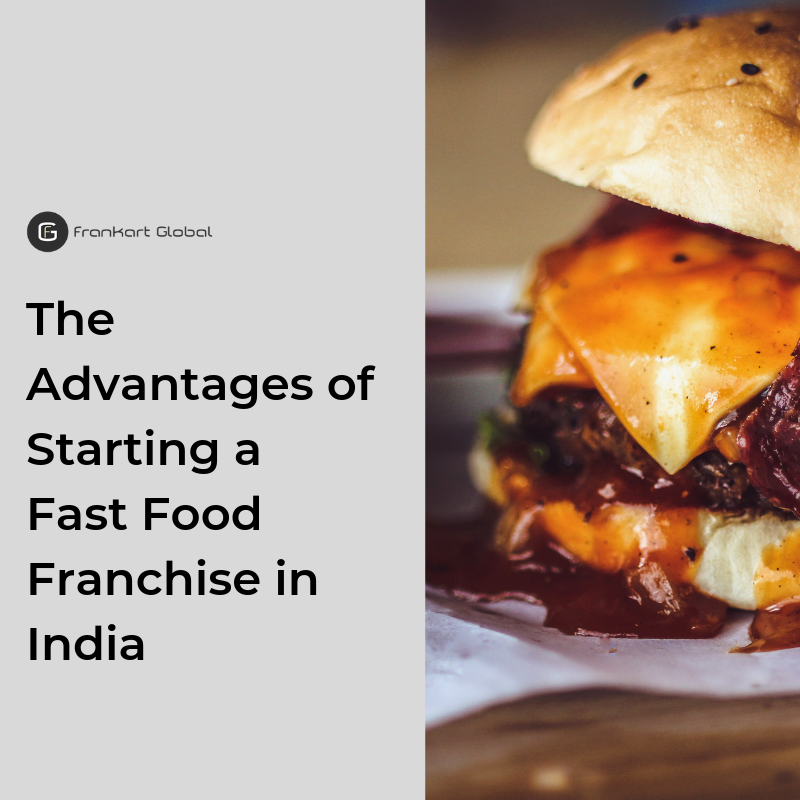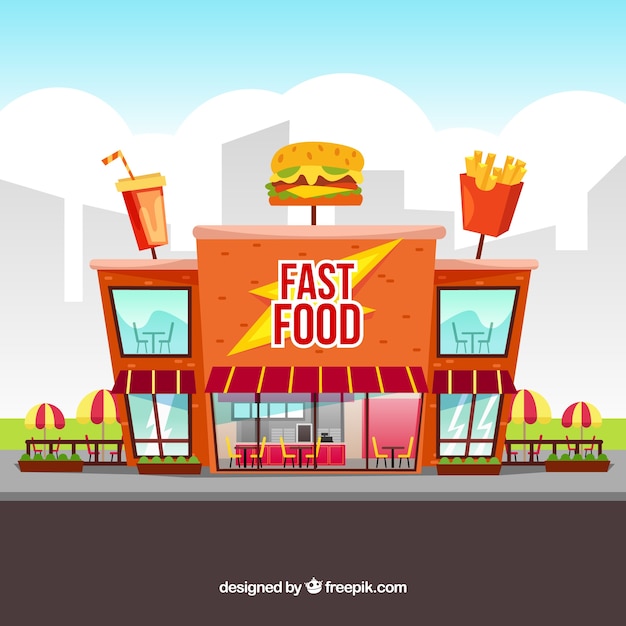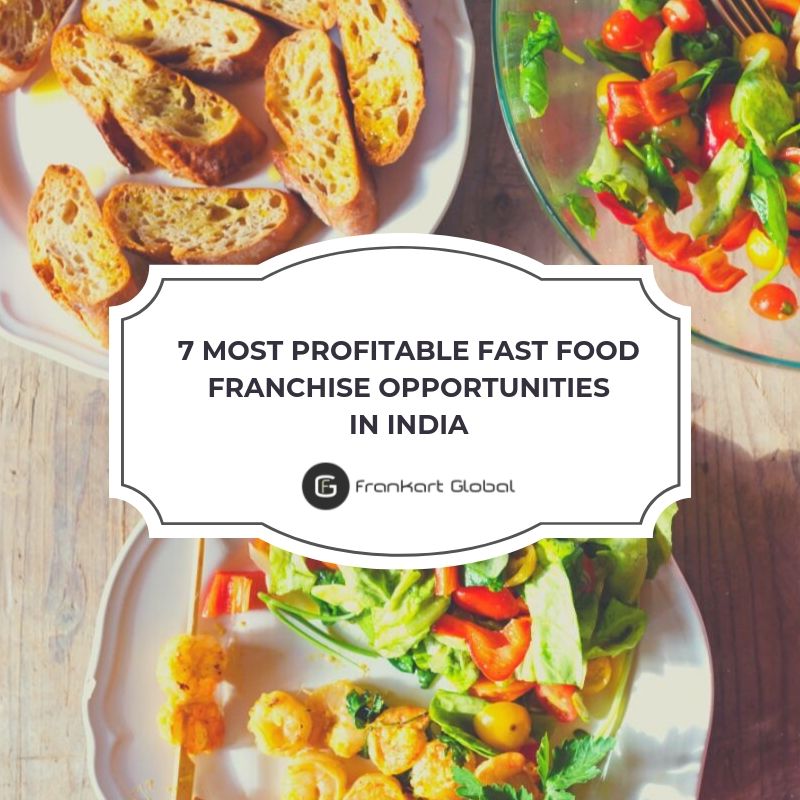

Fast Food Franchise in India
It is widely believed that the world’s first restaurant started in Paris in 1765 and served a single dish by the tavern-keeper to weary travelers.
However, the purpose of eating out has changed significantly since. Originally, restaurants were only meant for travelers away from home, and it wasn’t before the late 18th century that eating out at restaurants also became a leisure activity for locals.
Despite the shift in this trend, it wasn’t until the late 19th century, that the concept of fast food came into being. ‘Fast food’ as the name suggests, refers to food that is usually made with preheated or precooked ingredients, prepared in bulk, and served to consumers within minutes.
India’s population was still heavily dependent on street vendors, Udupi restaurants, and ‘tiffin’ lunch boxes when the first major fast food chain, McDonald’s set foot in India in 1996. Hesitant to experiment with fast food then, India is today one of the fastest growing markets for fast food.

Also known as Quick Service Restaurants (QSR), the fast food industry has witnessed exponential growth in India. According to a report by CRISIL, international fast food brands hold a 63% share of the Indian QSR market, ever since McDonald’s entered with its first outlet in 1996. This trend has been accredited to primarily two factors: an increase in disposable incomes and a large youth population. Owing to these factors, the Indian fast food industry is expected to further prosper at an annual rate of 10% and be worth US$ 27.57 billion by 2020, making it a new mega-market for international players.
The growth of these fast food brands, worldwide as well as in India, has been driven primarily by the ‘franchise’ model. Food franchises have, over the years, become so popular that when you think of a ‘franchise’, the first few names to pop up in your head will always be food franchises. With over 400 McDonald’s outlets, 1200 Domino’s outlets, 500 Subway outlets, and 422 Pizza Hut outlets, the franchise model has proven to be a boon for the franchisor and the franchise owner alike. Many Indian brands that have also successfully adopted this model include Haldiram’s, Bikanervala, Naturals Ice Cream, Frontier Bakery, etc. As India becomes one of the fastest-growing F&B industries in the world, it’s safe to place one’s bets on the fast food sector when seeking to establish a profitable business in the country.
The Benefits of Opening a Fast Food Franchise in India
India is the fastest growing economy in the world, as reported by the International Monetary Fund and it is no secret that Small and Medium-sized Enterprises (SMEs) have been a key driver of this growth. Thus, it is natural for people to want to start an SME, with the fast food sector being one of the most sought-after choices. But not everyone wants the risk that comes with building an enterprise from scratch, and that is where franchise brands enter the picture. The key advantages of opening a fast food franchise in India are listed as follows:
- A Simple Set-up: Franchises are relatively simple to set up and usually require an initial start-up cost to be paid from a franchise owner towards the franchisor along with an annual licensing fee. In return, the franchise owner receives access to the franchisor’s brand recognition, a loyal customer base, food preparation processes, and trademarks. The franchisor helps with the training of the staff, uniforms, and the design and decor of the outlet as well. This support structure is what makes getting a franchise business extremely attractive, especially to people who have no prior experience with launching an enterprise.
- Constantly Increasing Demand for Fast Food Restaurants:

In a country of 1.37 billion with 65% of its population under 35 years of age and over 600 million internet users, international exposure to various cuisines and global trends have played a crucial role in shaping consumer preferences in India. It comes as no surprise that a majority of international fast-food chains have found massive success in the country. This trend will continue to rise as a report suggests that by 2030, India is expected to witness four times the growth in consumer expenditure while its middle class is expected to grow from 50% to 80%, driving 75% of the consumer expenditure. As a result, the fast food industry will bear a major portion of the fruit of this change.
- Easy Access to Cost-Effective Labour: As a nation with the largest youth population in the world, India has relatively easier access to skilled, well-trained, and cost-effective labor. With a huge workforce of over 500 million people, it is not difficult in India to find labor best suited for the varied job roles in a restaurant business. Another notable advantage is the Indian labor’s familiarity with the English language, thus making it well-suited for catering to consumers from various cultural backgrounds and helping international brands cultivate a truly global image.
- Instant Brand Recognition: One of the most demanding tasks that entail opening a fast-food restaurant business is figuring out the best means to market the brand, build recognition and attract consumers effectively. It’s a crucial step in establishing the industry and can potentially make or break the brand, especially in a market that is as competitive as India’s. This is a major risk factor that fast food franchises almost entirely eliminate. A franchise outlet gets the benefit of an already established consumer base of the franchisor brand, along with the marketing support of the overall brand which provides a much-needed boost to new business set-ups.
- Easy to Innovate: As an industry, fast food can never cease to exist as people will always demand tasty, affordable, and quick food. Also, unlike in many other industries, innovation is not very expensive in this sector as one does not necessarily require new equipment or staff to bring in an entirely different menu, for example. Additionally, as a part of the franchisor network, a franchise owner does not have to worry about the creative costs incurred to modify their products, in response to the constantly evolving demands and needs of the consumers.
Things You Should Consider Before Opening
Now that we have discussed why the fast food industry is a lucrative investment option for potential business investors, let’s take a look at a few factors that must be considered before opening a fast food franchise outlet in India:
- Capital Needed to Launch a Franchise: First and foremost, a prospective franchise owner needs to understand the financial and human capital investment required to set up and run the franchise outlet. Even though the franchise model eliminates the risk of failure to a great extent, it requires a considerable amount of capital investment from the entrepreneur’s end that includes the rent/proprietorship of the outlet, start-up cost,
 annual licensing fee, hiring talented personnel and sometimes, also sharing a percentage of profits. In some cases, investors may even be required to show that they have enough capital for opening multiple stores for a couple of years. Hence, thorough research about the franchise one intends to buy is necessary, which will help determine if the franchise business opportunity is affordable.
annual licensing fee, hiring talented personnel and sometimes, also sharing a percentage of profits. In some cases, investors may even be required to show that they have enough capital for opening multiple stores for a couple of years. Hence, thorough research about the franchise one intends to buy is necessary, which will help determine if the franchise business opportunity is affordable. - Type of Food: Even though there isn’t much creative freedom once you have bought a franchise, there are still plenty of different categories of restaurants to choose from when considering purchasing a franchise. The fast-food industry might have begun with hamburgers and fries, but today, it has dramatically evolved, thus giving consumers a wide variety of options to choose from. Similarly, a prospective franchise owner can decide what kind of food he/she would be most comfortable selling. Some popular examples are a broad range of burgers at McDonald’s, a variety of freshly made cold sandwiches or salads at Subway, a greater variety of fried chicken at KFC, or freshly baked pizzas at Dominoes or Pizza Hut. If you want to serve Indian food as well, consider an Indian brand like Haldiram’s or Bikanervala.
- Hiring Personnel: The people who spend the maximum time directly interacting with the consumers are the restaurant’s staff, servers, delivery boys, and managers. Hence, it is of extreme importance that you hire talented and reliable employees: chefs, managers, waiters & waitresses. It is also vital that they understand the vision and objective of the brand and translate it well into their job roles. Regular feedbacks, training, timely disbursal of wages, and paying overtime are industry norms.
- Understand Different Franchise Ownership Models: There are often different types of ownership models that fra
 nchisors offer. Some of the common options to choose from are a single-store franchise, multi-store franchise, area developer, or master franchise. Before you decide to delve into the fast food franchise business, it’s important to understand and evaluate the pros and cons of each kind. The type of franchise owners that would be best for you also depends mainly on the amount of capital and time you are willing to invest in the business. For example, first-time investors might prefer the single-store model to learn the nuances of the business and seasoned entrepreneurs might choose to create a multi-store franchise business without several partners to minimize the risk.
nchisors offer. Some of the common options to choose from are a single-store franchise, multi-store franchise, area developer, or master franchise. Before you decide to delve into the fast food franchise business, it’s important to understand and evaluate the pros and cons of each kind. The type of franchise owners that would be best for you also depends mainly on the amount of capital and time you are willing to invest in the business. For example, first-time investors might prefer the single-store model to learn the nuances of the business and seasoned entrepreneurs might choose to create a multi-store franchise business without several partners to minimize the risk.
Overall, India has proven to be highly competitive and yet, a continuously blooming market for the fast food industry. Setting up a fast food franchise restaurant is undoubtedly one of the easiest ways to establish and run a profitable and successful business. With an economy as fast-paced as India’s, it is no surprise that major international F&B brands are all evolving to the needs of the Indian consumer and trying to best tap and expand their share of the Indian market. If you are interested to know more about how to open a franchise restaurant in India, please fill out our Investor Enquiry Form and we’ll get back to you.


 annual licensing fee, hiring talented personnel and sometimes, also sharing a percentage of profits. In some cases, investors may even be required to show that they have enough capital for opening multiple stores for a couple of years. Hence, thorough research about the franchise one intends to buy is necessary, which will help determine if the franchise business opportunity is affordable.
annual licensing fee, hiring talented personnel and sometimes, also sharing a percentage of profits. In some cases, investors may even be required to show that they have enough capital for opening multiple stores for a couple of years. Hence, thorough research about the franchise one intends to buy is necessary, which will help determine if the franchise business opportunity is affordable. nchisors offer. Some of the common options to choose from are a single-store franchise, multi-store franchise, area developer, or master franchise. Before you decide to delve into the fast food franchise business, it’s important to understand and evaluate the pros and cons of each kind. The type of franchise owners that would be best for you also depends mainly on the amount of capital and time you are willing to invest in the business. For example, first-time investors might prefer the single-store model to learn the nuances of the business and seasoned entrepreneurs might choose to create a multi-store franchise business without
nchisors offer. Some of the common options to choose from are a single-store franchise, multi-store franchise, area developer, or master franchise. Before you decide to delve into the fast food franchise business, it’s important to understand and evaluate the pros and cons of each kind. The type of franchise owners that would be best for you also depends mainly on the amount of capital and time you are willing to invest in the business. For example, first-time investors might prefer the single-store model to learn the nuances of the business and seasoned entrepreneurs might choose to create a multi-store franchise business without 

